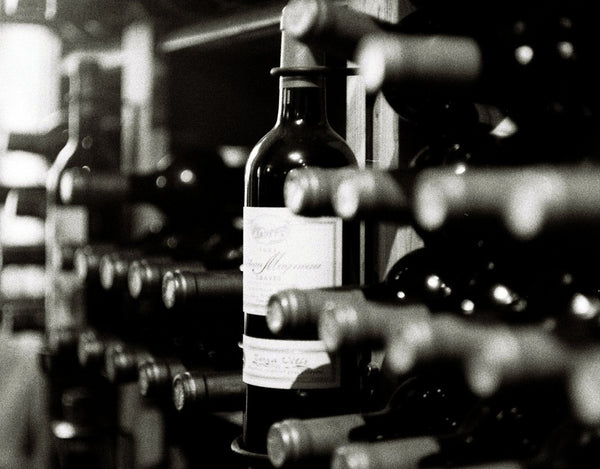Wine Aromas: Where Do They Come From?
Fine Wine Blog Wine Aromas Wine Flavours Wine Tasting

If you’re a fellow wine lover who likes to read tasting notes, we’re certain you’ve repeatedly stumbled upon various descriptions such as "the complex bouquet is rich with notes of earth; black fruit and lead pencil interwoven in notes of minerals and oak wood.”
Many beginners that discover their newfound love for fine wine are often left wondering. What does this description mean? Where did these wine flavours come from? Did they actually blend black fruit into this wine? And what on Earth does “earth” mean?
In today’s article we will demystify wine aromas. You’ll learn where they come from, what they mean, and how you can identify them yourself the next time you taste wine. Let’s get started!
Where Do Wine Aromas Come From?
First of all, it’s important to note the difference between a wine’s aromas and a wine’s taste. The wine aroma has everything to do with our sense of smell. The wine taste has everything to do with the various senses inside our mouth. Combined, they result in wine flavours.Because a very important part of the wine tasting experience happens inside our nose, extensive research has been conducted over the years to better understand how the wide variety of wine aromas come to be.
In short, wine aromas are the result of hundreds of different compounds (including alcohols) that combine to give a wide variety of unique perceived aromas. Because when we drink wine we might feel a strawberry texture combined with a slightly sour taste in our mouth, and a sweet smell in our nose, our brain is likely to put the pieces together and tell us we’re tasting strawberries.
The compounds that give a wine’s aromas differ for every wine, and they are influenced at 3 stages.
1. The Grape Growing Process
Known as primary wine aromas, they’re influenced by the type of grape used, as well as the environment that it grew in. Aromas in this group include earth (petroleum, red beet, volcanic rock, etc.), fruit, herbal, spice, and others.An earthy vintage that bursts onto the palate with dark fruits, this Ch. Pontet Canet, 2006 is a sublime example that takes its aromas from a blend of Cabernet Sauvignon, Merlot, Cabernet Franc and Petit-Verdot.
2. Fermentation
Known as secondary wine aromas, they’re influenced by the fermentation process – which involves yeast and other microbes. Fermentation induced aromas include mushroom, truffle, lager, butter, cream, and others.A great example of a Champagne well known for its creamy, fermentation induced aromas accompanied by a lively explosion of fruity notes is this Taittinger Comtes de Champagne Rose, 2005.
3. Aging Process
Known as tertiary aromas (or the wine’s “bouquet”), they are the result of aging (time spent in bottles or oak barrels, as well as oxidation). Aromas derived from general aging include tobacco, coffee, and dried fruit. Aromas derived from oak aging include vanilla, smoke and coconut.This Tignanello, 2008 is one of our favourite Super Tuscans, and a masterpiece known for its persistent smoke and tobacco bouquet, accompanied by notes of black cherries.
Wine Aromas In Practice
You can use the directions in this article to pin down your own personal preferences in wine aromas!By taking note of what you feel the next time you have your favourite wine, you’ll begin to develop your personal flavour profile. This will allow you to explore new wine varieties that have subtle similarities to wines you already know you like, taking the guess work out of the equation.
And in the meantime, why not take a look through our online wine shop? We feature a rare selection of the world’s finest wines, each with its own set of aromas waiting to be discovered!
